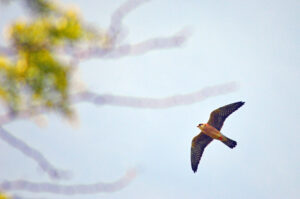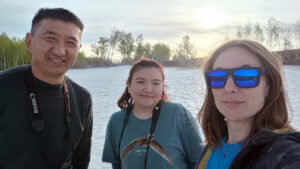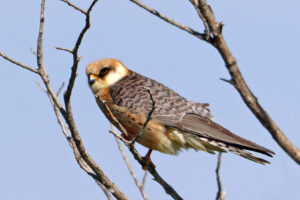Red-Footed Falcon
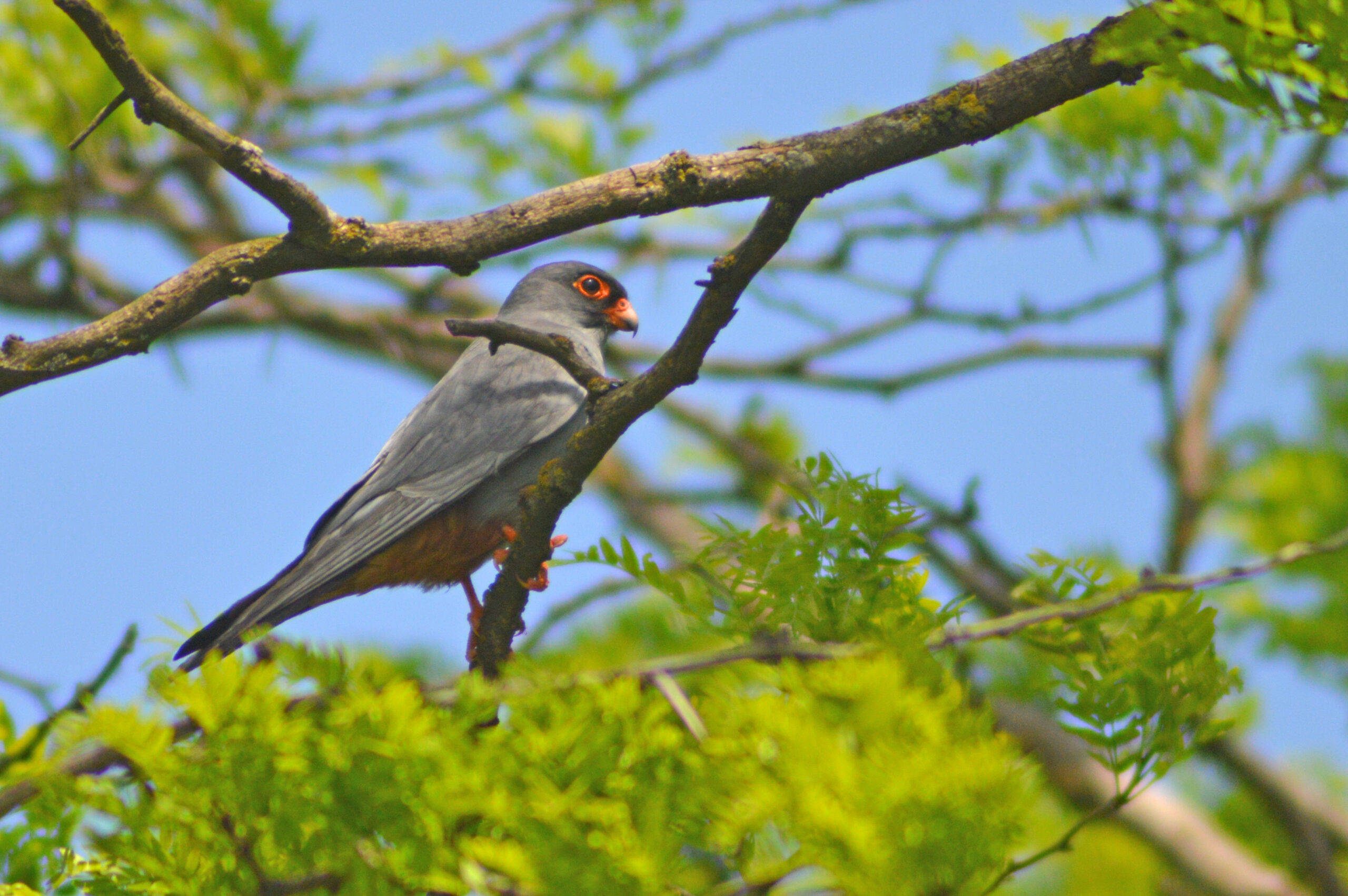
The Red-Footed Falcon (Falco vespertinus) inhabits steppe and forest-steppe zones, in landscapes where groves and floodplain forests alternate with open spaces. It nests in sparse colonies or in separate pairs. The nest is built on a deciduous (rarely coniferous) tree; old nests of crows, magpies, and rooks are often used.
Appearance
Small falcon, smaller than a pigeon, about the size of a merlin. The male is unmistakably recognizable: dark blue, almost black coloration, wings lighter, "pants" and under tail brick-red. The female is slightly larger than the male and of quite a different coloration: with bright red or red-yellow underside of the body and the same "cap"; the top is gray, with distinct brown transverse mottling.
Weight of males 120-190, females 130-200 g, length 27-33, wing of males 23.7-25.3, females 24.0-26.4, wingspan 65-78 cm. (kz.birding.day)
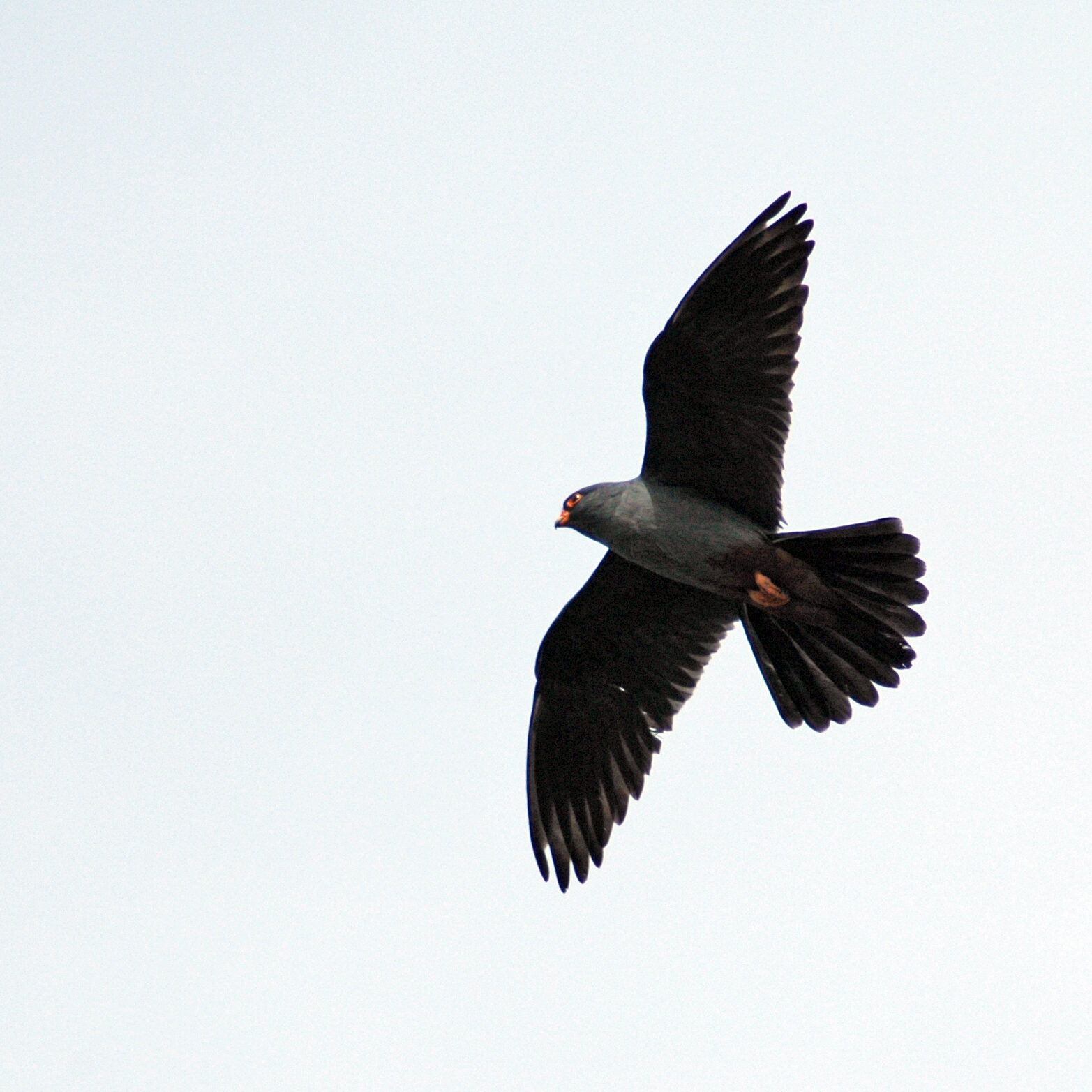
Species distribution
In Kazakhstan breeds in northern areas south to Urda, lower Urals, middle Emba valley, Naurzum, foothills of Western Altai, western part of Kalba Altai, Bukhtarma valley and floodplain of Black Irtysh. The flyway occurs in more southern areas (including the Chokpak Pass), and a flight to Lake Markakol was recorded (April 27, 1982). (kz.birding.day)
In 2007, 7 nesting sites of the Red-Footed Falcon were found in Ereimentau locality (I.V. Karyakin, personal communication).
Threats
- Shortage of sites suitable for nesting (old nests in colonies of Rooks and other ravens), destruction of habitats due to forest fires;
- Agricultural use of pesticides in bird hunting areas;
- Death from an electric shock on overhead power lines (OPL) with a capacity of 6-10 kV.

